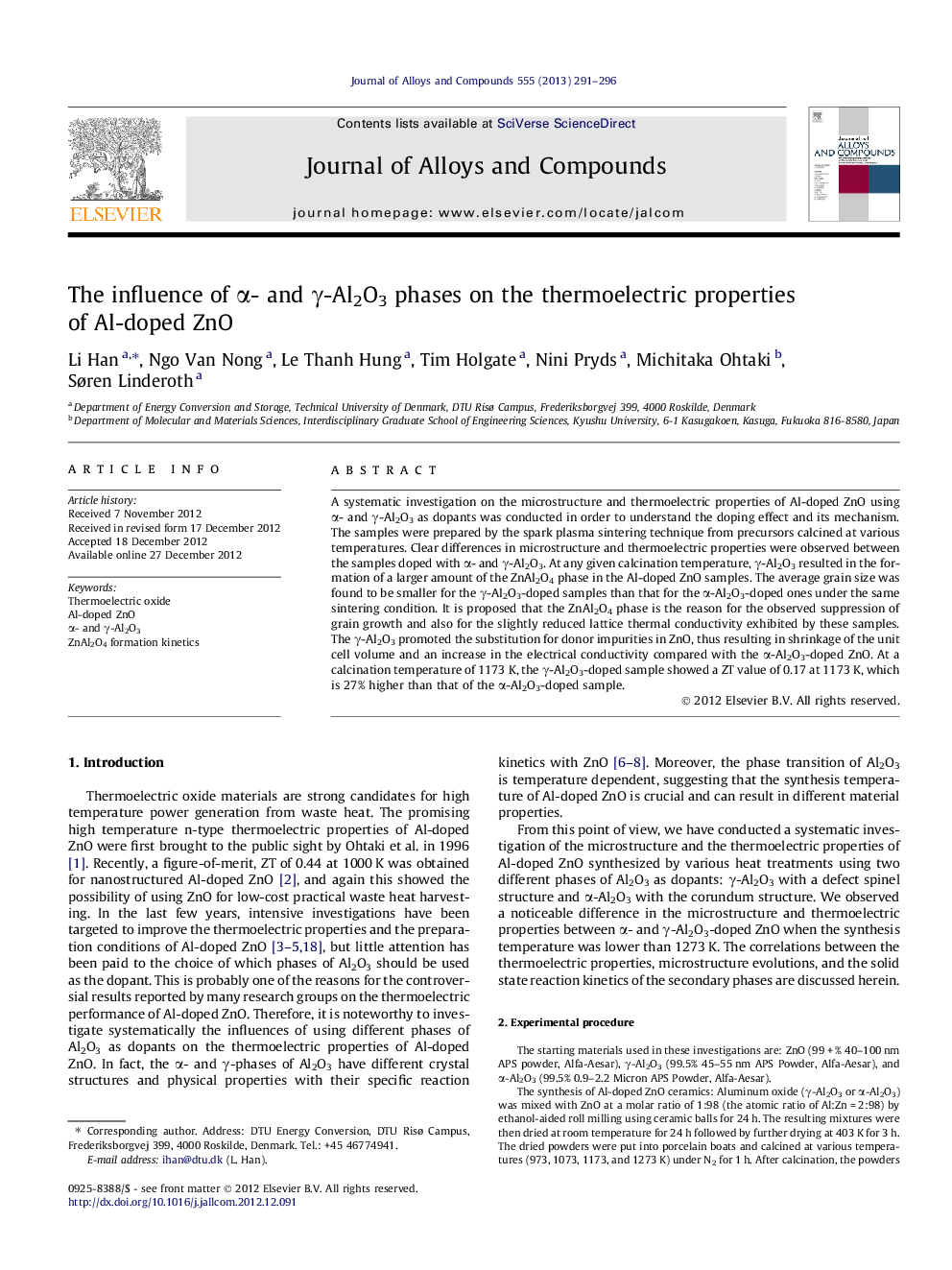| Article ID | Journal | Published Year | Pages | File Type |
|---|---|---|---|---|
| 1614758 | Journal of Alloys and Compounds | 2013 | 6 Pages |
A systematic investigation on the microstructure and thermoelectric properties of Al-doped ZnO using α- and γ-Al2O3 as dopants was conducted in order to understand the doping effect and its mechanism. The samples were prepared by the spark plasma sintering technique from precursors calcined at various temperatures. Clear differences in microstructure and thermoelectric properties were observed between the samples doped with α- and γ-Al2O3. At any given calcination temperature, γ-Al2O3 resulted in the formation of a larger amount of the ZnAl2O4 phase in the Al-doped ZnO samples. The average grain size was found to be smaller for the γ-Al2O3-doped samples than that for the α-Al2O3-doped ones under the same sintering condition. It is proposed that the ZnAl2O4 phase is the reason for the observed suppression of grain growth and also for the slightly reduced lattice thermal conductivity exhibited by these samples. The γ-Al2O3 promoted the substitution for donor impurities in ZnO, thus resulting in shrinkage of the unit cell volume and an increase in the electrical conductivity compared with the α-Al2O3-doped ZnO. At a calcination temperature of 1173 K, the γ-Al2O3-doped sample showed a ZT value of 0.17 at 1173 K, which is 27% higher than that of the α-Al2O3-doped sample.
Graphical abstractFigure optionsDownload full-size imageDownload as PowerPoint slideHighlights► Different microstructures between the γ- and α-Al2O3-doped ZnO were observed. ► A higher ZT were obtained from γ-Al2O3-doped ZnO than that of α-Al2O3-doped ZnO. ► Thermoelectric properties were correlated to the solid state reaction kinetics. ► A possible mechanism of ZnAl2O4 formation was proposed.
